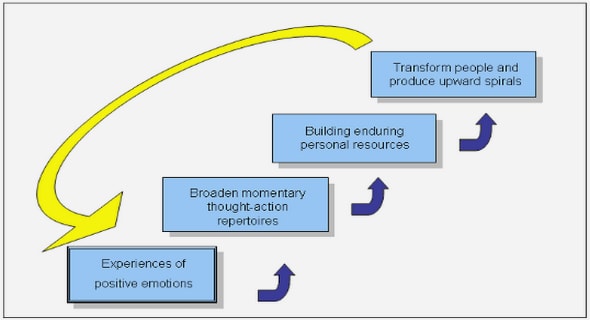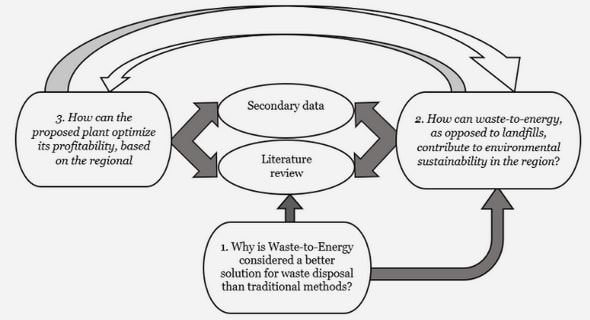Get Complete Project Material File(s) Now! »
Method
The third chapter aims to give the reader insights of the chosen research method. The chapter includes the research philosophy, research approach, research design and research method. Additionally, the chapter states how the data was collected and how the analyzed. At last the chapter describe the ethics and the trustworthiness of the thesis.
Research Philosophy
Research philosophy, describes the process of knowledge and the nature of that knowledge. The research philosophy consists of assumptions how the researcher views the world. The research philosophy is important as the researcher’s assumptions help to support the research strategy and intended methods. Furthermore, the researcher not only need to understand the topic but also the aspects that are investigated. These aspects will be dependent on the methods chosen from the research strategy. The emphasize of the research philosophy reflects upon different philosophical choices and how well they stand in comparison to the alternatives, rather than the alternative of how the philosophy strategy is informed (Saunders, Lewis & Thornhill, 2009).
The most common debates among philosophers is the topic regarding the matters of ontology and epistemology. Ontology is the nature of reality and existence and epistemology is the theory of knowledge. Epistemology supports to understand the best way of enquiring into the nature of the world and there are two contrasting views how a social science research would be managed, positivism and social constructionism. Positivism refers to the social world exists externally where the properties can be measured through objective methods, instead of subjective through sensation or intuition. Social constructionism refers to that many aspects of social reality are established by people rather than objective factors (Easterby-Smith, Thorpe & Jackson, 2015). De Massis & Kotlar (2014), state that the majority of case studies done in the field of family business are conducted through a positivistic view. This study will however use interpretivism as an approach. The interpretivism understand the differences of humans in their roles of social actors (Saunders et al., 2009).
Easterby-Smith et al., (2015) state that, there are several reasons why it is beneficial to understand the philosophical issues. In order to have a clear sense of the researcher’s reflexive role in research methods, they are obligated to understand the basic issues of epistemology. Understanding the research philosophy is useful when defining the research design. This involves evidence that is essential and how these will be collected and interpreted, as well as providing good answers to the questions that are being investigated in the research. Understanding the knowledge of the philosophy could help the researcher to distinguish which design will work. Lastly, to understand philosophical issues, it can assist the researcher to determine and perhaps create, designs the researchers did not have previous experiences from (Easterby-Smith et al., 2015).
Research Approach
Research approach is the adoption of a theory, referring to an implementation of either deductive, inductive or abductive approach. Depending on the implementation, the choice of the research philosophy and strategy will reflect how the research strategy is designed (Saunders, et al. 2009). The deductive approach is presenting the commonest aspects of nature and the relationship between theory and social research. The inductive theory on the other hand is based on the theoretical outcome from the research (Bryman, 2012). Abductive approach is a third approach that could be used. Abduction is the procedure of reasoning through how we observe phenomenon in relation to other observations either in the way of a cause or in the sense of creating new general descriptions. Furthermore, abduction is the most conjectural method since it seeks the fit of a situation by observing fact and rules (Timmermans & Tavory, 2012). This thesis will take an abductive approach, as the research process will be pending between observations in the form of interviews and the theory of PO-fit.
Research Design
Research design serves the benefits of providing framework for the collection and the analysis of the data (Bryman, 2012). The research design organizes the research activities and the collection of the data, in order to solve the research objectives. The characteristics of research design is making choices of what will be observed and how. The research design is commonly 22written before the data is collected, in order to determine what, how and from where the data will be gathered. It also serves the purpose of how the data will be analyzed and how the collected data will be used to provide answers for the research questions (Easterby-Smith et al., 2015). Research design is regarded as a framework or a plan for conducting the research project. It specifies the procedures necessary for obtaining the important information, in order to structure or solve the stated research problems. A well-formed research design will assure that the research project is managed in an effective and efficient way. There are two classifications of research design; exploratory and conclusive. The exploratory research design aims to provide insights and understanding of marketing phenomena, that are problematic to measure or where a topic cannot be measured using a quantitative approach. Conclusive research design aims to describe specific phenomena, test hypotheses and examine specific relationships. Conclusive research requires more specific and clear information and tends to be more formal and structured than exploratory research (Malhotra, Birks & Wills, 2012).
This thesis aims to understand how small-medium sized family businesses can improve their employer brand through social media in order to amplify the role of PO-fit, as it is yet an unexplored area of research. Since the authors’ ambition is to provide a deeper understanding the strategy will be consisting of an exploratory research design. The research will furthermore try to understand the aspects of managers using social media into the business strategy. The exploratory approach is applicable on areas that are lacking knowledge and yet not fully explored. This type of research design is useful for this thesis since it aims to explore and understand phenomena and does not demand a structured or defined information of the problem (Malhotra et al., 2012). As the purpose of this thesis is to gain insights of phenomena from new perspectives the exploratory research design with qualitative exploration, will give the authors incentives to use it as it will answer “how” and “why” questions (Baxter & Jack, 2008).
Research Strategy
Depending on the applied research strategy, the strategy has a significant impact on what is understood as well as what the researchers are investigating. The choice of research strategy will be directed by the research questions, the range of existing research and other resources available. It is important to see that no research strategy is more or less important than other strategies, nevertheless what is of importance is that the particular strategy will allow the research questions to be answered and fulfil the objectives (Saunders et al., 2009).
Data in raw forms is referred as quantitative data, which needs to be interpreted and analyzed in order to be visible to the researchers. A quantitative research would not fulfill the purpose of this thesis, since this thesis is not requiring numerical data and therefore, a qualitative approach would be more applicable (Saunders et al., 2009). In qualitative research strategy, it is more important to find quality of the participants, rather than numbers of participants (Malhotra et al., 2012). The qualitative data must be summarized and categorizes to get meaningful content out of the data. The qualitative data should be analyzed through a conceptual framework. The process of analyzing the data will be time consuming (Malhotra et al., 2007). However, the interpretation process of the data occurs simultaneous as the data is being collected (Saunders et al., 2009).
Research Method
Since the research questions of the thesis requires a qualitative research method, the authors have considered in-depth interviews to get valuable insights and understandings in order to answerer the research questions (Malhotra et al., 2012). There are numerous of reasons why qualitative approach would be useful over quantitative in this particular thesis. When dealing with sensitive information participants may not be willing to answer questions truthfully, as the questions might intrude their privacy or potentially embarrass them. In business research, questions related to business performance and future plans could be viewed as commercially sensitive topics. Therefore, a qualitative approach could be regarded as suitable for these kinds of issues, since qualitative research approach allows the researchers to get closer to the participants and get access to sensitive information. A qualitative research approach also allows 24 to get the holistic dimensions and complete a picture of a whole context in the phenomena. The topic of interest exists in a multi-layered context and could require several different methods to verify that the researcher include all the angles (Malhotra et al., 2012). As this thesis aims to understand how small-medium sized family businesses can improve their employer brand through social media in order to amplify the role of PO-fit, the authors considered a qualitative research method to be the most appropriate one to use.
1. Introduction
1.1 Background
1.2 Problem Definition
1.3 Purpose
1.4 Research Questions
1.5 Delimitations
1.6 Definition of Key Terms
2. Frame of Reference
2.1 Family Business
2.2 Employer Branding
2.3 Social Media for Businesses
2.4 Person-Organization Fit
2.7 Evaluation of Current Research
2.8 Gaps and Flaws in Existing Research
2.9 Future Research
3. Method
3.1 Research Philosophy
3.2 Research Approach
3.3 Research Design
3.4 Research Strategy
3.5 Research Method
3.6 Data Analysis
3.7 Research Ethics
3.8 Research Trustworthiness
4. Empirical Findings
4.1 Interview Information
4.2 Introduction to Aggregated Dimensions
4.3 Family Business Management
4.4 Employer Branding
4.5 Personal and Organizational Value
5. Analysis
5.1 Family Business Management
5.2 Employer Brand
5.3 Personal and Organizational Values
5.4 Model of Influencing Factors
6. Discussion and Conclusion
6.1 Research Questions
6.2 Relevance of Study and Implication
6.3 Limitation and Further research
GET THE COMPLETE PROJECT
How Family Businesses’ Unique Factors can be used when Amplifying their Employer Brand through Social Media


